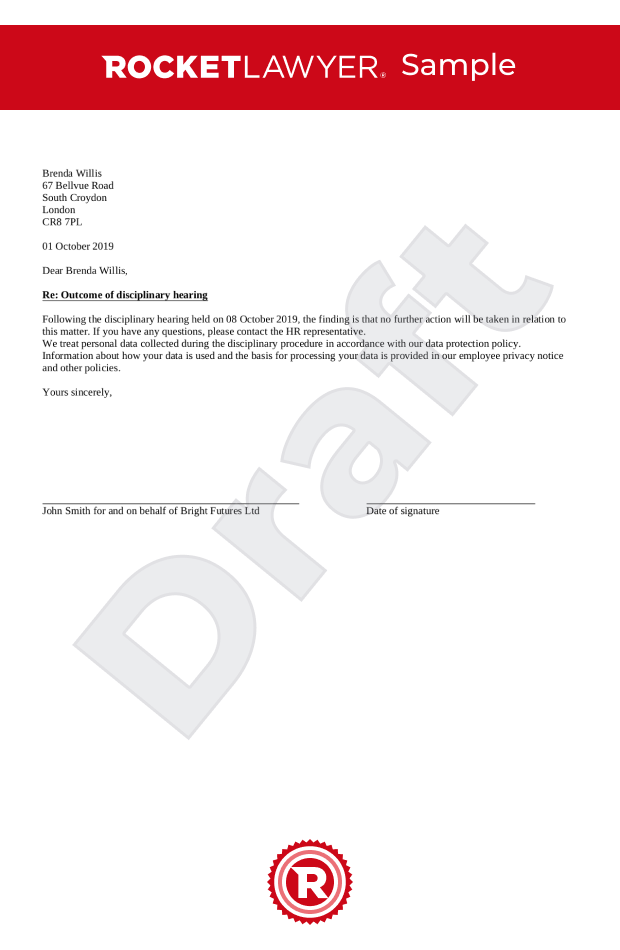Make your Free Disciplinary Outcome Letter for Misconduct - Warning or No Action
This document is GDPR compliant. Make sure you follow proper disciplinary procedures when you decide there will be no dismissal following a disciplinary process, with this disciplinary outcome... ... Read more

How to Make a Disciplinary Outcome Letter for Misconduct - Warning or No Action
-
Summary of a disciplinary outcome letter for misconduct - warning or no action
This document is GDPR compliant.
Make sure you follow proper disciplinary procedures when you decide there will be no dismissal following a disciplinary process, with this disciplinary outcome letter after disciplinary action. Use this disciplinary outcome letter to confirm that an employee has been given a warning (first or final) as a result of misconduct. This letter covers the reason for disciplinary action, the nature of the warning (first or final), the consequences of further misconduct and the right to appeal against the action taken.
-
When should I use a disciplinary outcome letter for misconduct?
Use this letter:
- if you want to confirm that an employee has been given a warning or final written warning as a result of misconduct
- for junior or senior employees
- only for employees based in England, Wales or Scotland
-
What's included in a disciplinary outcome letter for misconduct?
This letter covers:
- the reason for disciplinary action
- the nature of the warning (first or final)
- the duration of the warning
- the changes in conduct needed and any additional measures such as training or impact on bonus
- the consequences of further misconduct
- the right to appeal against the action taken
-
What's a disciplinary outcome letter for misconduct?
When an employee has been subject to a disciplinary hearing on grounds of misconduct, their employer must provide them with a misconduct outcome letter. This letter outlines the decision resulting from a disciplinary hearing and the reasons for the outcome. It either clarifies that no further action will be taken (eg if allegations of misconduct were unfounded or not proven) - or else confirms a first or final warning. If a warning is given, the letter should outline any actions (eg training) which the employee must undertake, how they should change their behaviour and any consequences if the misconduct continues.
-
Do I need a disciplinary outcome letter for misconduct?
The ACAS Code of Practice on Discipline and Grievance requires employers to communicate in writing any decisions arising from a disciplinary hearing (section 17 of the Code of Practice). If the employer fails to do so and the employee successfully brings a case for unfair dismissal in court, the employment tribunal might award an extra 25% compensation to the employee.
Issuing a formal disciplinary outcome letter for misconduct also reduces the likelihood of further disputes in relation to the hearing decision.
-
How long should the warning last for?
Misconduct warnings should specify how long they will last; failure to comply with the initial warning during the set period can lead to a final warning. Although there are no specific warning periods required, they should remain reasonable, and an initial warning period normally lasts 6 or 12 months.
-
Can an employee appeal the decision?
Yes - employees always have a right to appeal the outcome of a disciplinary hearing. The ACAS Code of Practice requires employers to indicate this right of appeal in the disciplinary outcome letter.